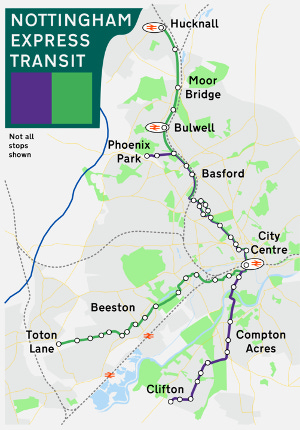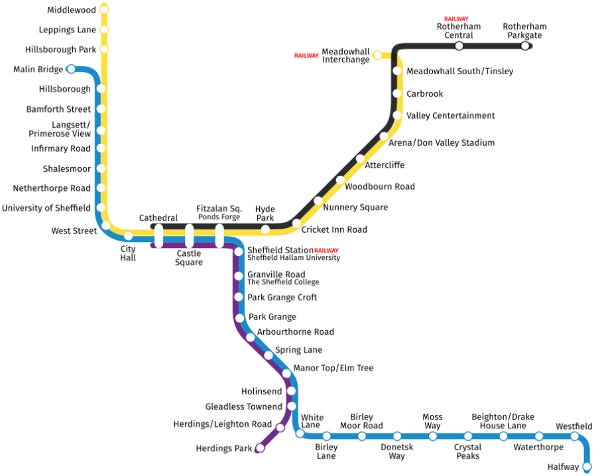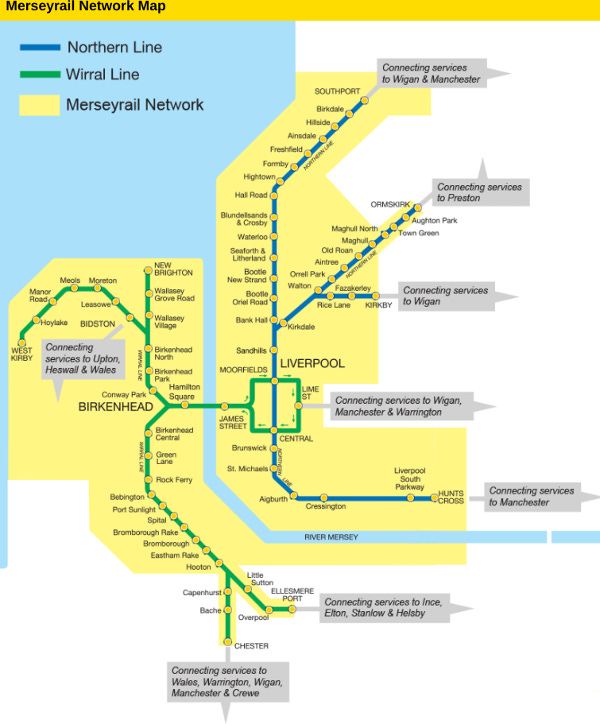This is a follow up to last week’s post. That one asked how many metro lines London has now; this asks the same about the rest of the UK, so that we can compare the two, with predictable and hilarious results.
Before we get to the content, though, I want to tell about the Newsletter of (Not Quite) Everything’s *special Christmas offer*:
Subscribe for a year, and I'll give you 10% off AND send you a copy of my book, The Compendium of (Not Quite) Everything, too, to read or re-gift to the person of your choice!
That is a frankly mind blowing £55 worth of stuff for just £36. I’m going to be honest, I wasn’t going to do the 10% off as well, but when you set up a special offer there’s a box that asks you how much to take off the cost and putting “0%” just made me feel awful. So you’re getting that, too.
Anyway, I’m running this offer right up until Christmas. To claim it – and why wouldn’t you? It’s great, I’m basically defrauding myself here – just click here.
And now, some actual content.
How many lines does the rest of the UK have?
A while back, I spent a large chunk of this newsletter investigating how many lines Transport for London now has, if you count the DLR, Overground etc. as well as the tube. I came to the conclusion that – if they’d only listen to me and split up the Northern and District lines, as they obviously should do – you could get as high as 28. This led Chris Keating to ask, “For balance, could you count the number of tube (and/or tram or urban light rail) lines in the rest of the country?” which was, I thought, an annoyingly good idea, so let’s do it.
First up, let’s define terms. What I’m interested in here is basically “metros”: fixed transport links intended to help you get around particular conurbations. That includes light rail and trams; it doesn’t include buses. More controversially, from some points of view, it also doesn’t include bog standard National Rail lines: they’re a hugely important part of the transport network, of course, but:
they’re not inherently urban, unless consciously branded and managed as such; and
I didn’t count them in London.
So: something that’s run like London Overground counts; something that’s run like Thameslink does not.
Let’s start with the places that are easy because, so far as I can see, there is nothing to count. There is not a single thing one could call a metro, even if you squint, in the entirety of Wales. The South Wales Metro project, which will enhance assorted railway lines in and around Cardiff, may count, when it happens; but it hasn’t happened yet, and may, anyway, end up looking more like slightly better rail services than something that’d be recognisable to the French or Germans as a metro.
In the same way, there is absolutely nothing in the south of England outside London. Bristol too has a rail improvement plan with the word “metro” in it, MetroWest; its mayor Marvin Rees has even talked of an underground. Even if the latter ever seemed plausible, alas, Rees’ post is being abolished in 2024. As to the other big southern conurbations, both Brighton and the Southampton/Portsmouth area have reasonably decent rail links but nothing more. So as things stand, the total is: nil.
The East of England hasn’t got much going on either. There’s the Cambridgeshire Busway; but while I think you can make a case for Bus Rapid Transit done well, this looks like, well, just a bus, with some guided sections, not a bus pretending to be a metro, which is really what BRT is all about. (I didn’t count the East London Transit for the same reason.)
Anyway, it’s not an urban route, so much as an interurban one, connecting Cambridge with Huntingdon via, tellingly, a disused railway line. So, unless they build the Isaac Newton line – which, let’s be honest about this, they’re not going to – the total still stands at nowt.
Things get better as we look further north (and how often does anyone get to say that when writing about British transport infrastructure). At time of writing, the correct answer for how many lines the West Midlands Metro, between Birmingham and Wolverhampton, has is, technically, “zero”: all services were suspended back in March after, er, cracks were found in the trams. However, reports have assured us that, by now, the line should be up and running again.

Note the use of the singular, however: the conurbation’’s mayor Andy Street has, in classic Johnsonian style, campaigned for re-election using a map of his bold plans, but offered no insight whatsoever in how he actually plans to deliver them. And while the existing Line 1 is being extended at both its Birmingham and Wolverhampton ends, Line 2, which will run from Wednesbury to Brierley Hill, isn’t due to open until next year.
So, as things stand, Britain’s second largest conurbation has precisely one metro line. This is particularly pathetic, since it’s the same number it’s had since 1999.
Another Midlands city is doing a bit better, if judged in absolute terms, or a lot better, if you do it by population. The greater Nottingham area has almost exactly a quarter the population of the West Midlands, yet has twice the number of tramlines: one from Clifton to Phoenix Park, the other from Toton to Hucknall, with the two sharing a section between the city centre and Basford.

This was funded partly through a levy charged on parking spaces provided by employers, which raised £83 million to pay for an extension: no other British city has yet had the balls to copy this, which is a shame, as it’s obviously extremely cool, and explains partly why Nottingham is one of the few British cities outside London that has the sort of transport network you’d expect to find in a similar sized city in most of Europe.
Another – possibly the only other – is Sheffield, whose nauseatingly named Supertram Network currently consists, officially, of four lines: the Yellow Route, the Blue Route, the Purple Route and the Tram-Train, which, despite being shown on the map in black, is definitely not called the Black Route. This is, of course, intensely irritating.

I’m not entirely sold on this being four different routes if I’m honest. All four share a central section, with two destinations on one side and four on the other: it’s almost exactly as complicated as London’s District line, which even I don’t think should count as more than two lines.
But, I think we have to go with the official pronouncement: it counts as four. That means that the entirety of Great Britain south of the M62 corridor has a grand total of seven metro lines outside London.
The Leeds/Bradford/West Yorkshire conurbation is the largest in Europe without a metro of any sort. The British government did pass a bill to begin construction of one, in 1993; twelve years later, without an inch of track being laid, it revoked it. The people of West Yorkshire would be well within their rights to riot and/or declare their independence, but nonetheless: Leeds need not detain us further here.
Liverpool’s three line tram network Merseytram was also cancelled, in 2013; the city is also home to one of Britain’s great lost railways, the Liverpool Overhead Railway, which ran for seven miles along the dock front between 1893 and 1956. You can sit on one of its trains upstairs in the Museum of Liverpool, and I defy you to do so without feeling sad.
But! Merseyrail does at least continue to run rail services on a very similar model to the London Overground. That’s definitely two lines (the Northern Line and the Wirral Line); a third, the City Line, run by Northern Trains, is more arguable – it was only ever some branding slapped on some bog-standard (that is, poor) Northern Rail services – and seems to have been dropped from the map.

Actually, I think you can probably make a case that the Wirral line consists of two different lines, which divide in Birkenhead; the Northern line is a harder call, since two of the branches share over half their route, and a third something like 40%. So, while you could go anywhere from two to five, I’m going to stick with three as I think it’s the easiest figure to defend. So, we’re up to 10.
Greater Manchester has, after three decades of extensions, something resembling a proper network. Today, Metrolink consists of 99 stops along 64 miles of track. It’s not quite on the level you’d expect of a similar sized French city – Marseille and Lyon both have full-sized metros, as well as trams – but it’s a decent shout nonetheless.
But determining how many lines this is is proving surprisingly difficult. There are eight branches radiating from the city centre, certainly, plus the tiny spur to Media City; the map currently features eight colours, too, although the two eights aren’t the same eight, because many trams cover a branch on either side of the centre.
I’d argue that there are really just six. The brown route (East Didsbury-Shaw & Crompton) is really just a part of the pink one (East Didsbury-Rochdale ), and could plausibly go the way of the orange (Media City-Ashton-under-Lyne; withdrawn due to the pandemic) without too much bother. In the same way, yellow (Bury-Piccadilly) is really just a truncated version of green (Bury-Altrincham). I’m going to count eight, but I’m not happy about it. That’s 18.
The Blackpool Tram, which despite everyone thinking it’s a tourist attraction still runs for 11 miles along the Lancashire sea front, counts as one line. The Tyne & Wear Metro definitely has two lines, green and yellow, as well as one of the best bits of any transport network anywhere in the UK, as you emerge from the ground beneath Newcastle Central station to find yourself on a bridge high above the Tyne.
The Edinburgh tram is a single line, and while a more complex network has been proposed it has yet to emerge. The Glasgow Subway likes to pretend it’s two lines, inner and outer, but come on, it’s a single loop line that happens to run two ways.
I have agonised over whether to count Belfast’s Glider, another bus-based network, on the grounds that it’s clearly meant as a form of Bus Rapid Transit. But any BRT that isn’t properly segregated from normal traffic is not going to be very R, so I don’t think it counts.
That means that the highest number I can get to for the number of UK metro lines outside London is 22. Counting on a similar basis, I think there are 28 in London: even discounting my own weird obsessions (the District, Northern and Lea Valley lines should count as two each; the cable car should probably count) it still has 24.
Which means that there are more metro lines in London than there are in the entire rest of the UK combined.
So anyway, that’s why so many people got angry at my Crossrail tweets the other week.
Self-promotion corner
The article above is an expanded extract from the archive of the Newsletter of (Not Quite) Everything, a weekly newsletter which goes out every Wednesday at 4pm. Normally, become a paying supporter, for a mere £4 a month or £40 a year, means that, for less than a pound a week, you’ll get a frankly slightly excessive amount of content every Wednesday afternoon: a bit on politics, some diverting links, an article on something from history/geography/language/whatever I’ve been obsessing about this week, and the map of the week. Click here to get started.
But, as noted, right now you can get all that, and a copy of my first book The Compendium of (Not Quite) Everything, for just £36. Just click here.
And, of course, times are tough. If you can’t currently justify paying for some nerd’s substack (unemployed, underemployed, impoverished student, and so forth), just hit reply and I’ll give you a complimentary subscription, no questions asked. Honestly, it sounds like a trick, not least since it seems to undermine that whole “special offer” thing I was only just banging on about… but it isn’t, I am literally giving it away.
Or here are some things you can read completely free:
“‘Broken Britain’, intended as a critique of Labour’s record in government, has come to look increasingly like a campaign pledge.” My latest New Statesman column, on how, by wasting the decade of low interest rates, the Tories literally didn't fix the roof while the sun was shining;
A lot of nonsense I’ve written about Doctor Who, which you can find here.



